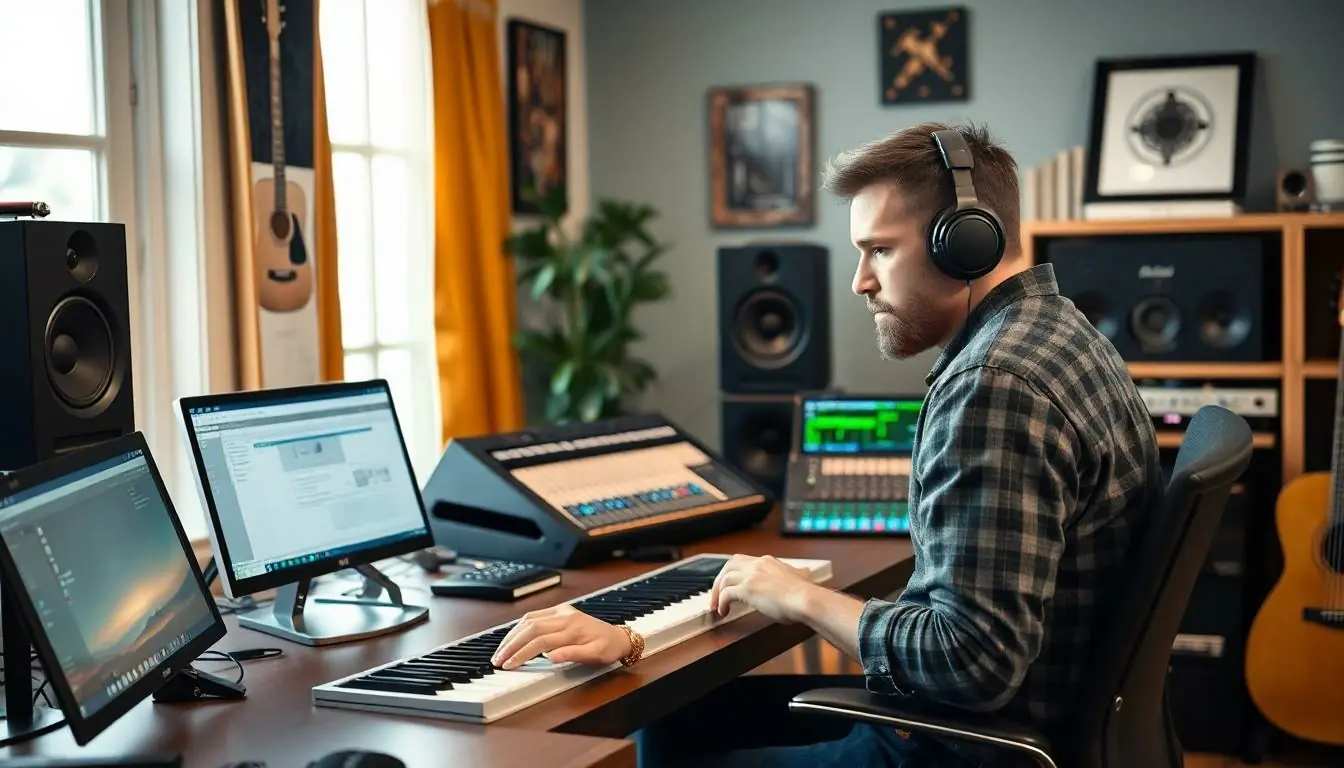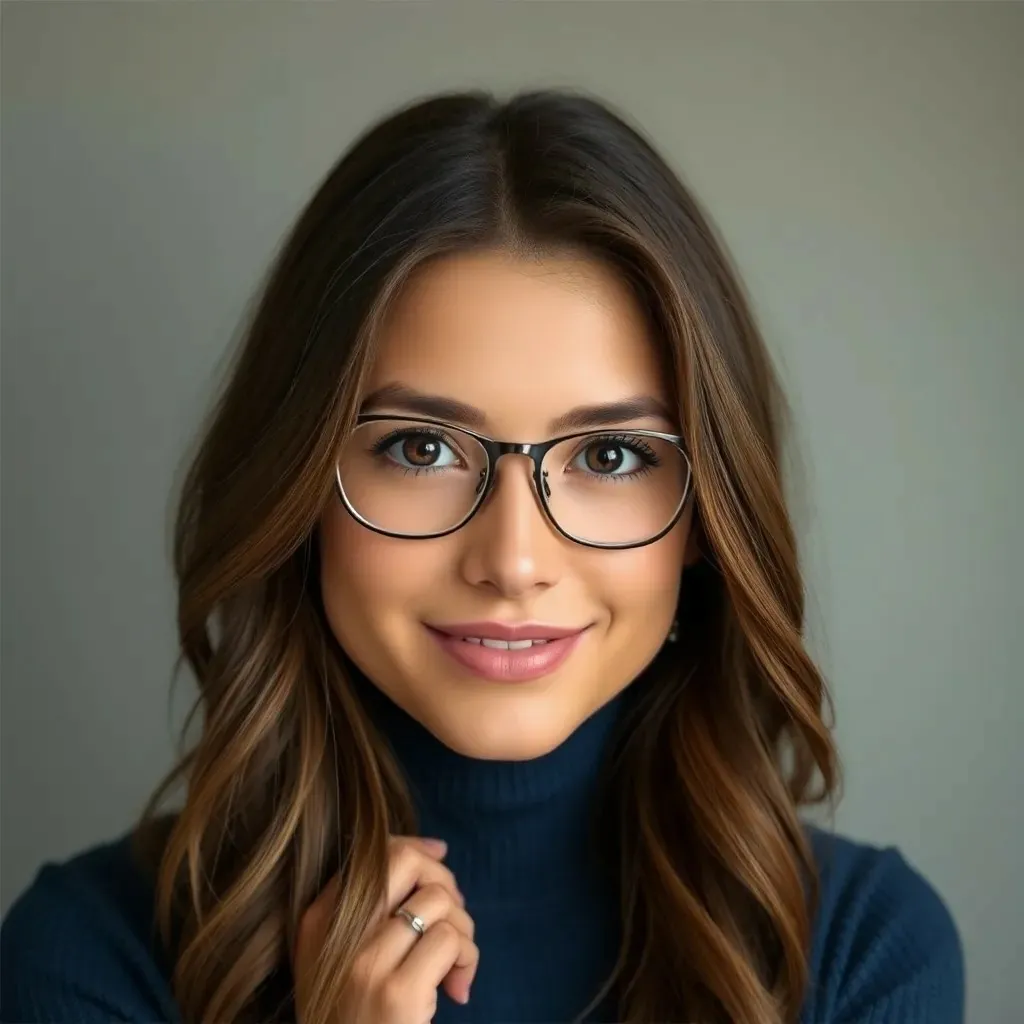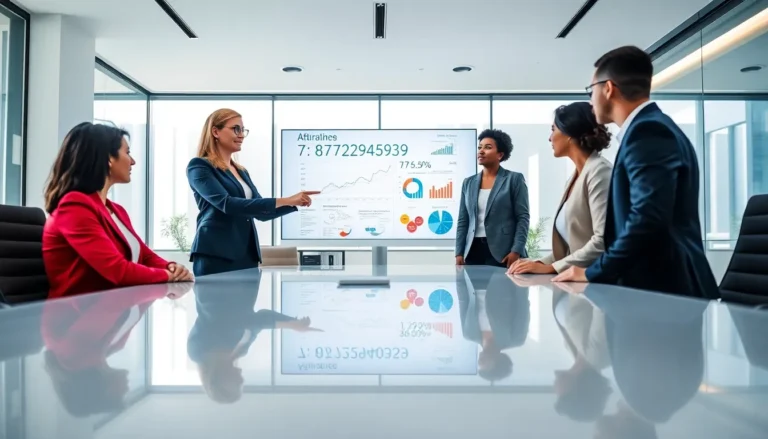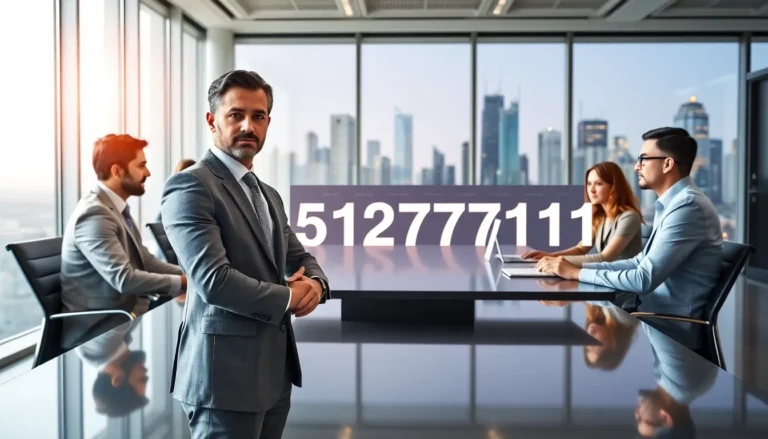In a world where technology can brew coffee and walk dogs, the question arises: can ChatGPT compose music? Picture this: a digital maestro crafting symphonies while you sip your morning brew. It sounds like a scene from a sci-fi movie, but it’s closer to reality than you might think.
As artificial intelligence continues to evolve, the potential for machines to create art has sparked curiosity and debate. Is ChatGPT the next Beethoven or just a glorified karaoke machine? With algorithms that can analyze patterns and generate melodies, it’s time to explore whether AI can hit the right notes or if it’ll leave us cringing like a cat on a piano. Dive in as we unravel the musical talents of ChatGPT and discover if it can truly compose a masterpiece or if it’s just playing a digital game of musical chairs.
Table of Contents
ToggleOverview of AI in Music Composition
Artificial intelligence plays an increasingly significant role in music composition. Various algorithms analyze patterns in music, enabling AI to generate original compositions. Researchers and developers explore these capabilities, raising intriguing questions about creativity.
AI systems, like OpenAI’s MuseNet and Jukedeck, demonstrate the ability to craft melodies and harmonies that resonate with listeners. Machine learning techniques empower these systems to learn from extensive databases of music styles, genres, and compositions. This learning capability allows AI to imitate different musical traditions and adapt to individual preferences.
Collaboration between human composers and AI enhances creative output. Some musicians use AI as a tool to inspire new ideas or experiment with unique sounds. By utilizing AI-generated elements, composers can introduce fresh perspectives into their work.
The ethical implications of AI in music also arise. Concerns about copyright, ownership, and artistic authenticity spark debates in the music industry. Some argue that music created purely by algorithms lacks the emotional depth and personal touch that human composers bring.
While AI-generated music has gained recognition, it does not replace human creativity. Many view AI as a complement to traditional composition, offering new dimensions to art. Audiences express diverse reactions to AI-created music, with some embracing it and others remaining skeptical.
Exploring the intersection of AI and music reveals vast potential. As technologies evolve, AI may redefine the boundaries of creativity, enabling innovative collaborations between human artists and machines. The journey into AI music composition continues, leading to an exciting frontier in the world of music.
Understanding ChatGPT’s Capabilities

ChatGPT showcases significant abilities in generating text, but its potential in music composition requires deeper exploration.
Language Processing and Music Theory
Artificial intelligence relies on language processing to understand musical concepts. ChatGPT processes musical terminology and structure through natural language. While it can create lyrics and suggest song themes, melody generation poses a challenge. Music theory knowledge enhances its understanding of scales, chords, and rhythm patterns. Learning from existing compositions allows ChatGPT to produce harmonically pleasing results. Human input remains crucial for emotional subtleties, anchoring AI-generated music to human expression.
Limitations of AI in Creative Fields
Despite advancements, AI shows limitations in creative fields. Emotional depth often eludes AI-generated compositions, which can feel robotic. Understanding cultural context in music creation poses another challenge for AI. Limited interpretation of nuance and personal experiences hinders AI from achieving genuine artistic connection. Copyright issues also arise, leading to confusion over ownership of AI-generated works. Collaborations between human musicians and AI may yield innovative results, yet reliance solely on AI compromises creativity’s essence.
Examples of ChatGPT Composing Music
ChatGPT demonstrates its capability in music composition through various approaches. These examples illustrate how AI can contribute to songwriting and melody creation.
Song Structure and Lyrics
ChatGPT successfully generates song structure ideas, including verses and choruses, by analyzing existing music patterns. It creates lyrics that often resonate with themes and emotions prevalent in popular songs. For instance, while generating a pop song, ChatGPT might incorporate relatable narratives, employing catchy hooks and vivid imagery. Its understanding of rhyme and meter enhances lyrical flow, offering coherent and engaging verses. Various genres inspire its output, allowing it to adapt styles to suit specific audiences. Specifically, generated lyrics can blend humor, romance, or introspection, appealing to diverse listeners’ tastes.
Instrumentation and Melodic Ideas
Instrumentation is another area where ChatGPT excels. It can suggest various instruments for a piece, such as guitar, piano, or string ensembles, each fitting the desired mood. For example, when composing a ballad, ChatGPT may recommend soft piano chords accompanied by strings to evoke an emotional atmosphere. Melodic ideas generated by ChatGPT often include catchy motifs and creative patterns, tailored to the suggested lyrics. Novel combinations of rhythms and melodies emerge, providing fresh perspectives on traditional song forms. Musicians can find inspiration in these melodic suggestions, leading to innovative compositions that merge human creativity with AI-generated concepts.
Comparing ChatGPT with Other AI Music Tools
ChatGPT’s ability to compose music is intriguing, especially when compared with specialized AI music tools. OpenAI’s MuseNet can create original compositions by analyzing vast datasets. It draws from genres and styles, offering a wide array of musical possibilities. Jukedeck, another well-known example, focuses on generating unique melodies, allowing users to customize their musical experience conveniently.
In contrast, ChatGPT excels in generating lyrics and song structures. It crafts verses and choruses that resonate with contemporary themes, showcasing an understanding of language and rhythm. While other AI music tools may focus exclusively on melody, ChatGPT integrates textual creativity into its compositions.
Collaboration remains a crucial element in comparing these AI systems. Musicians benefit from mixing human creativity with each tool’s strengths. For example, a human composer can use ChatGPT for lyric generation while relying on MuseNet for melodic progression. Such collaboration highlights how AI complements human artistry without overshadowing it.
Limitations do exist in both contexts. Emotional depth which characterizes human compositions often eludes AI, including ChatGPT. Cultural nuance also presents challenges for AI tools, affecting their ability to create genuinely relatable music. Yet, the rapid advancements in AI music technology show promise.
As AI continues to evolve, ChatGPT and other tools are likely to redefine the music composition landscape. Each tool offers unique strengths, encouraging musicians to explore new creative avenues. The interaction between human composers and AI may lead to groundbreaking innovations within the industry, benefiting both the creators and listeners alike.
The exploration of ChatGPT’s ability to compose music reveals a fascinating landscape where technology meets artistry. As AI continues to evolve it opens doors for innovative collaborations between human musicians and machines. While ChatGPT excels in generating lyrics and song structures its limitations in emotional depth and cultural nuance remind us of the irreplaceable qualities of human creativity.
The potential for AI-generated music is vast yet it serves best as a complement to human expression rather than a substitute. As the music industry embraces these advancements the synergy between artists and AI promises to redefine creative boundaries and inspire new musical horizons. The journey into the realm of AI music composition is just beginning and its implications could shape the future of music in exciting ways.






